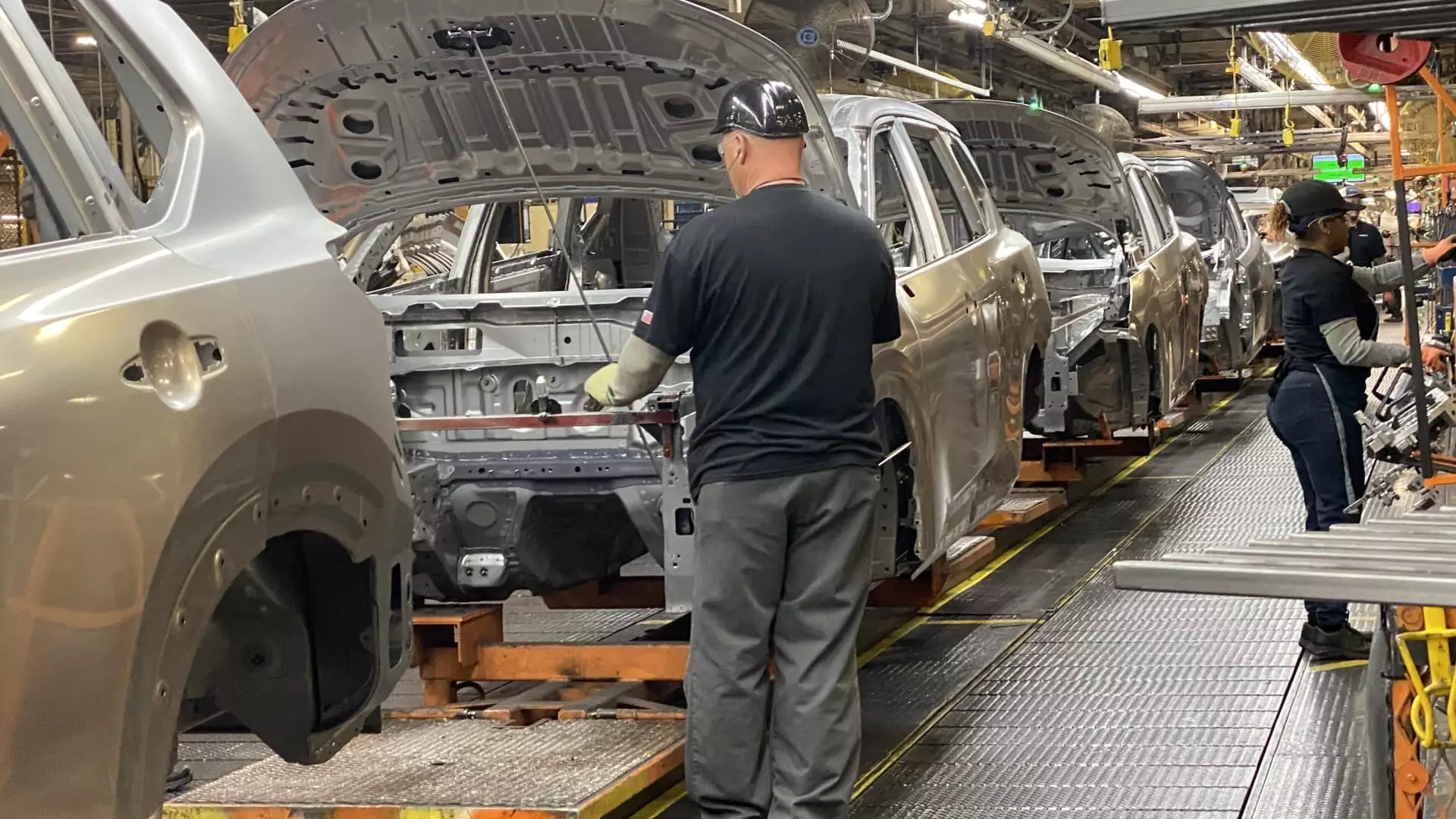The automotive industry is currently navigating treacherous waters, exacerbated by President Trump’s controversial 25% tariffs on imported vehicles. As these tariffs remain in force, albeit with recent changes to other levies, analysts predict dire consequences for both consumers and manufacturers alike. The forecast suggests a staggering reduction in vehicle sales—up to 2 million units annually—alongside dramatic increases in vehicle prices and overall industry costs that could run into the hundreds of billions. Yet, amid these challenges, there are deeper issues at play that call for a serious re-examination of trade policies and their implications on consumer affordability and economic stability.
The Unraveling of the Automotive Market
According to experts, these tariffs are not just a temporary setback; they signify a monumental restructuring of the automotive sector that may be felt for years to come. Felix Stellmaszek of the Boston Consulting Group argues that this may very well mark the most pivotal year in the history of the industry. The costs of production are expected to increase by an eye-watering $110 billion to $160 billion annually, a financial burden that will likely be shared unevenly between manufacturers and consumers.
The Center for Automotive Research estimates that American automakers will face an increase of approximately $107.7 billion in costs, an alarming figure that is bound to strain relationships between domestic companies like Ford, GM, and Stellantis. The structural changes imposed by these tariffs could impose irreversible damage to the longevity of these companies’ market positions while pushing vehicle prices far beyond reasonable affordability.
Passing the Buck: Consumers Bear the Brunt
As the saying goes, “no pain, no gain,” but in this scenario, it appears that consumers will absorb the brunt of the pain with little to no gain. Even though automakers might attempt to absorb some of these costs, the reality remains that they are likely to pass increased prices onto consumers, leading to a further decline in sales. According to Goldman Sachs analysts, the anticipated price inflation could translate to an average increase of $2,000 to $4,000 on new vehicles—the kind of price hike that is unlikely to sit well with an already beleaguered consumer base.
Amid an economic climate where inflation is again a buzzword, consumer sentiment has taken a further hit. As reported in a recent University of Michigan survey, consumer outlook has rapidly declined, with inflation expectations at their highest since 1981. With new vehicle prices hovering near $50,000 and loan rates skyrocketing to nearly 15% for used vehicles, the barriers to purchasing a new car have only become more insurmountable.
Automakers’ Tactical Responses
In an attempt to cope with the fallout from these tariffs, automakers have engaged in a variety of tactical responses. For iconic manufacturers like Ford and Stellantis, temporary promotions offering employee pricing have become necessary to retain consumer interest, albeit at a cost to their margins. Others, such as Jaguar Land Rover, have taken a more drastic approach by halting U.S. shipments entirely, reflecting the extent of the crisis.
Hyundai’s decision not to raise prices for a minimum of two months exemplifies the industry’s struggle to maintain consumer confidence. However, this strategy may ultimately prove futile as the reality of increased costs looms on the horizon. Car manufacturers may only have a limited window to sell their inventories unaffected by tariffs before being forced to adjust prices upwards, illustrating the tightrope they must walk in trying to balance profitability and consumer satisfaction.
The Broader Economic Implications
The ramifications of these tariff-induced price hikes extend beyond mere consumer dissatisfaction; they seep into the fabric of our economy. A potential decline of two million vehicles sold could spell economic turmoil, impacting a wide array of sectors ranging from manufacturing to retail. Rising costs won’t just affect car payments—they promise to inflate prices across various consumer goods, tightening the fiscal stranglehold on American families already contending with the intricacies of modern life.
Auto industry analysts indicate that the impending reality is a narrower selection of vehicles, fewer sales, and potential elimination of certain product lines altogether. For consumers, this shift brings forth the dual sting of affordability and availability. As new and even used car prices increase considerably, the dream of vehicle ownership may become further out of reach for many, raising urgent questions about the sustainability of such economic policies.
In the end, while short-sighted tariffs may have been positioned as a means to protect domestic jobs, the broader implications could lead to job losses in the automotive sector and beyond. The climate of uncertainty and inflated costs reinforces the need for comprehensive trade policies that consider the real-world implications rather than merely political posturing.

